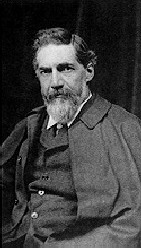
William Matthew Flinders Petrie (1853-1942) first came to Egypt in 1880, when he was twenty-seven. Inspired by the theories of Piazzi Smyth, based on the measurements of the pyramids, he was determined to prove their veracity with precise measurements. However, his observations led to the opposite conclusion. This blow was the start of Petrie's success as an archaeologist. The book he wrote about his research earned him a reputation which he was able to use to persuade the recently founded Egypt Exploration Fund to commission him to excavate.
He returned to Egypt in 1883, and after ten years of excavations in various places, Petrie decided to concentrate on the earliest phase of Egyptian history. He was determined to demonstrate that the people who had provided the impulse for the development of Egyptian civilization had come from Punt, and in 1893 he began to look for traces of the origins of that people on the west bank of the Nile opposite Coptos, near Naqada. Petrie's original hypothesis concerning the people from Punt did not stand up, but he discovered an enormous cemetery where people were buried in the foetal position, unmummified, something which had never before been seen in Egypt. Although Petrie originally considered a date in the 1st Intermediate Period, he quickly realised that the 1st Dynasty or the Predynastic Period were far more likely. Later, Petrie found similar cemeteries in the area between Dendera and Abydos.
Excavations in Petrie's time concentrated on collecting as many objects as possible for museums and private collectors, with no attention being paid to the conservation of sites or the recording of data. However, right from the start of his career, Petrie was convinced of the importance of every detail for the reconstruction of life in Ancient Egypt. His careful way of excavating and cataloguing was new within Egyptology, and quickly became the methodology followed by others. By carefully studying the objects he found, mainly pottery, and to arrange them in order of age, Petrie also developed a method to date the Predynastic Period that remained in use for decades.